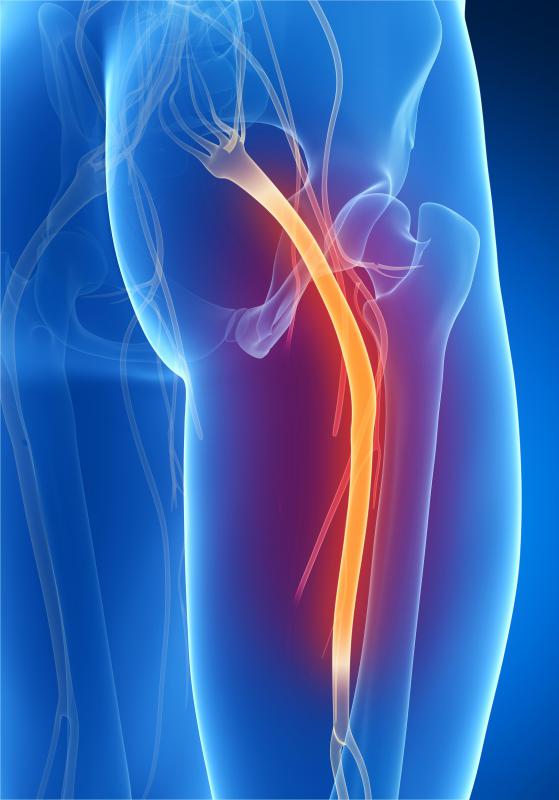At WiseGEEK, we're committed to delivering accurate, trustworthy information. Our expert-authored content is rigorously fact-checked and sourced from credible authorities. Discover how we uphold the highest standards in providing you with reliable knowledge.
What are the Different Types of Piriformis Stretches?
Piriformis stretches are essential to loosening the piriformus muscle – the small muscle in the buttocks that helps stabilize and rotate the hip. When this muscle becomes overly tight, it can irritate the large sciatic nerve in the pelvis and cause pain, tingling, and numbness in hips and legs. Even worse, long-standing piriformus muscle problems can cause nerve damage, cause the spine to become misaligned, and affect spinal disks. There are many types of piriformis stretches that can ease the pain and strengthen the hips. When these exercises are performed regularly, future problems can also be avoided.
Sitting piriformis stretches are an easy stretch for beginners, one that loosens the deep piriformus muscle as well as the muscles of the outer thigh. While sitting up straight in a chair, a person places one ankle on top of the other knee. The ankle is held in place while the person gently leans forward 6 to 12 inches (about 15.24 to 30.48 cm). The position should be held for several seconds, and then switched to the other leg.

Leg rolls are excellent piriformis stretches because they loosen all the pelvic-area muscles and joints. This will relieve pelvic pressure and allow the spine to regain proper alignment. To do a leg roll, a person lies on his or her back while holding the knees against the chest with both arms. The knees are rolled to one side and held for ten seconds; then, he or she rolls to the other side and holds. It is important that a person keeps his or her shoulders pressed against the ground.

The hip stretch will extend all the muscles of the pelvis and outer thigh. To perform this stretch, a person lies flat on his or her back and pulls one knee to the chest, holding it at the ankle. The ankle is then pulled across the body to the opposite shoulder and held for 30 seconds. He or she then releases the leg and switches to the opposite leg.

Hamstring exercises loosen the large muscle at the back of the thigh, reducing pressure on the muscles and tendons in the buttocks. A person lies flat on his or her back and bends one knee, bringing it level with the hip. With the opposite hand, the knee is pulled across the body and held for ten seconds. The leg is then returned to the center and the motion is repeat with the other leg.

Piriformis stretches typically should be performed every two or three hours when the pain first appears; but as the muscles heal, the exercise program can be reduced to twice a day. A person should take caution to not overstretch and cause more pain. At the start, it may be possible for each pose to be held for only a few seconds, but working up to a stretch of 30 seconds can be a good goal. A consistent stretching program can not only reduce hip problems, but could help prevent further back problems in the future.
AS FEATURED ON:
AS FEATURED ON:














Discuss this Article
Post your comments